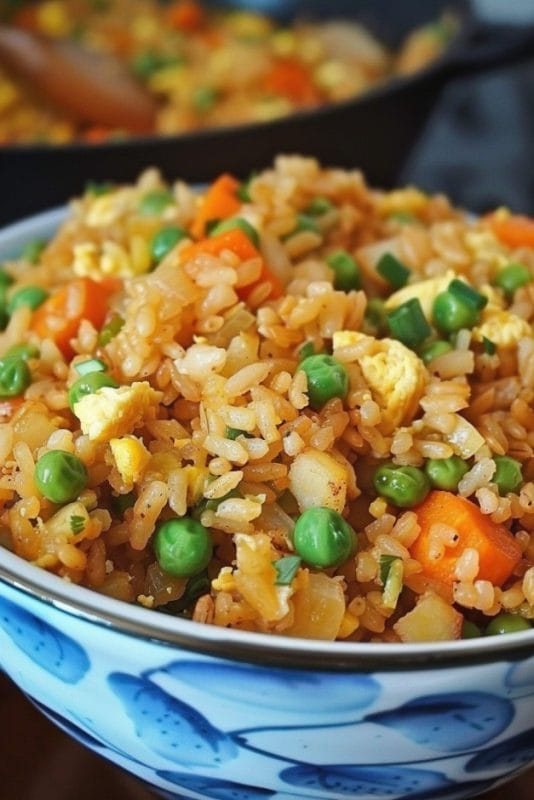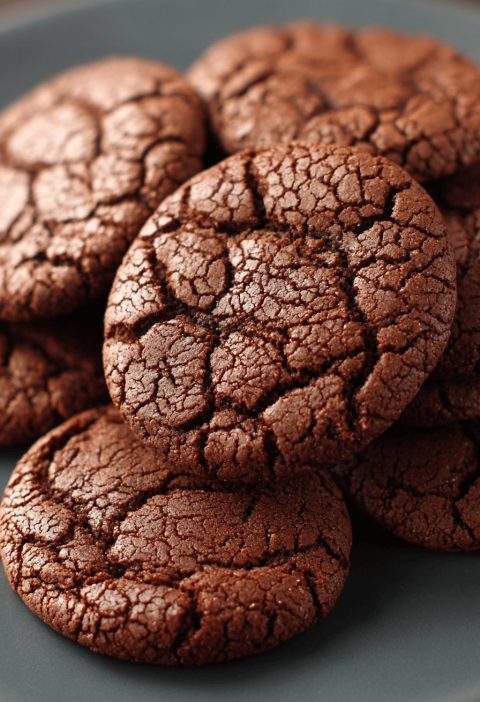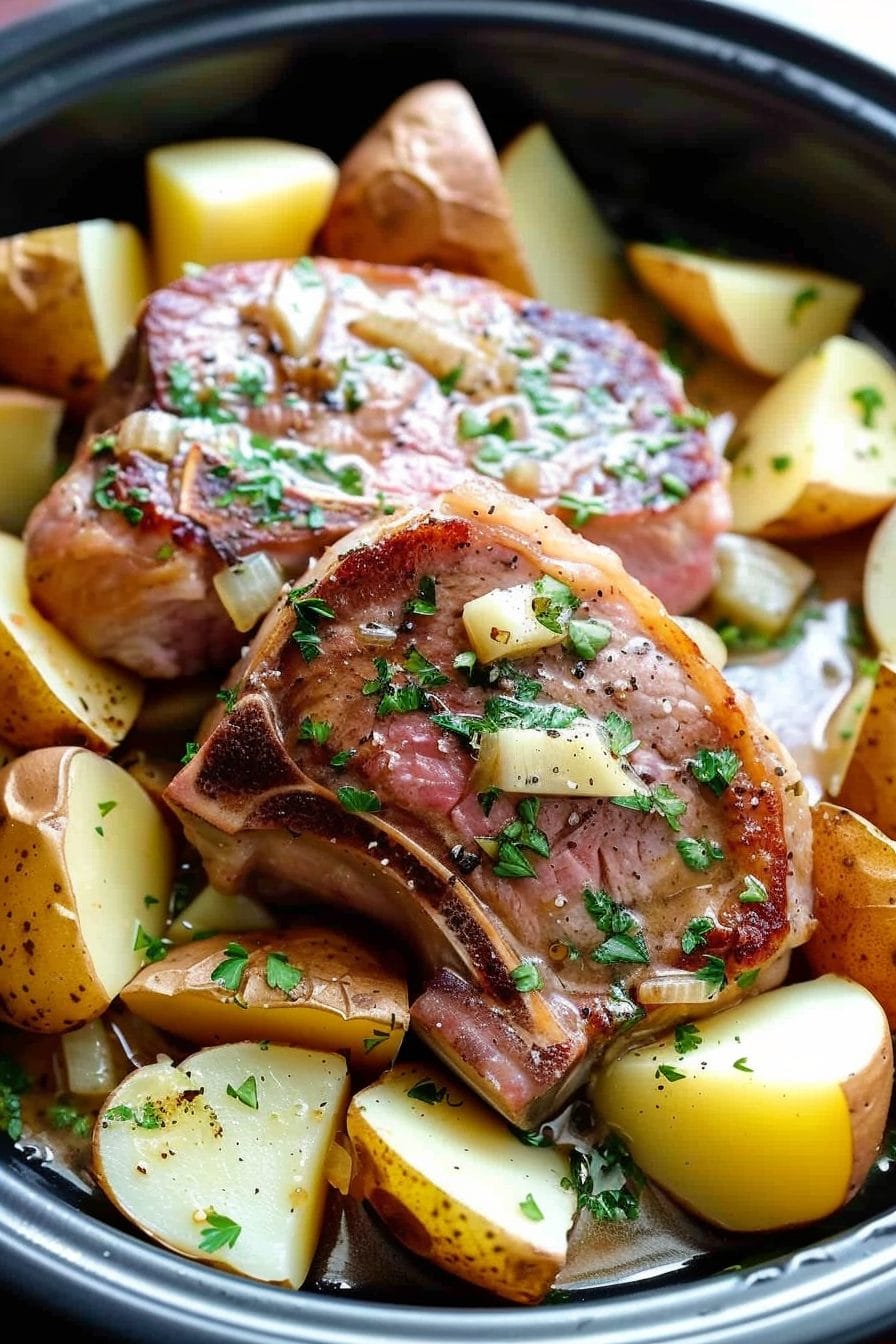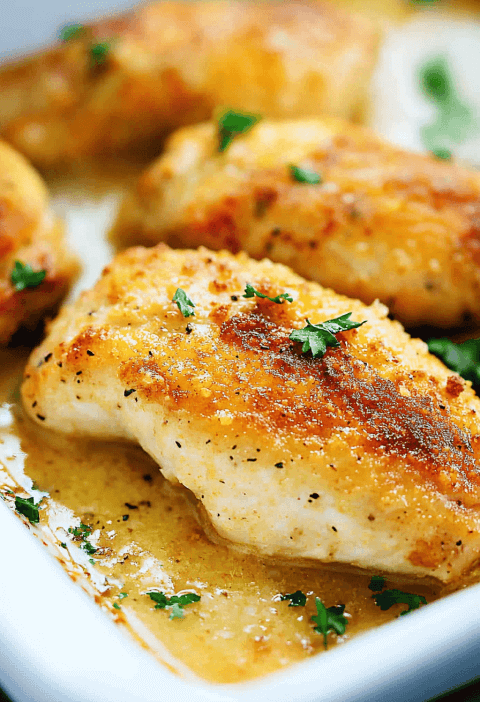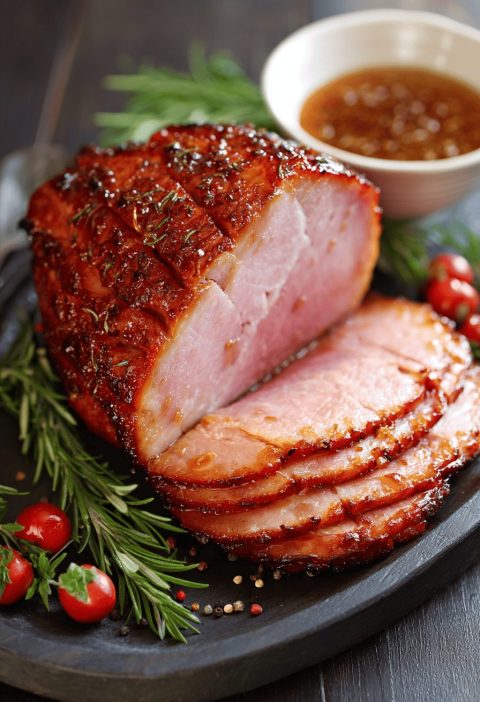Would you like to save this?
Fried rice is a beloved dish that hails from various Asian cuisines, particularly Chinese cuisine. It’s a versatile and savory dish that can transform leftover rice and a handful of vegetables into a restaurant-quality meal. This homemade version, which promises to be even better than take-out, combines simple ingredients with a straightforward method to create a flavorful and satisfying dish.
Introduction
Fried rice has been a staple in many households and restaurants for centuries, owing to its simplicity, flavor, and adaptability. The beauty of fried rice lies in its versatility. It’s a dish that can easily accommodate various ingredients based on what you have on hand, making it an excellent option for those nights when you need to clear out the fridge. Whether you are a fan of the classic version or enjoy experimenting with different flavors and ingredients, fried rice never disappoints.
History and Cultural Significance
Fried rice originated in China and has spread throughout Asia, with each region adding its unique twist. In China, it’s often enjoyed as a staple dish, using leftover rice and whatever ingredients are available. The practice of using day-old rice is essential as freshly cooked rice tends to be too moist and sticky for proper frying. In Japan, fried rice, or chahan, often includes Japanese ingredients such as soy sauce and sometimes mirin, a sweet rice wine. Southeast Asia has its own versions, with Thai fried rice (khao pad) incorporating fish sauce and lime, and Indonesian nasi goreng being rich with sweet soy sauce and sometimes topped with a fried egg.
Ingredients and Preparation
Ingredients
Butter
: Used for frying the ingredients and adding a rich flavor.
Eggs: Lightly beaten and scrambled to add protein and texture.
Carrot: Provides sweetness and a slight crunch.
Onion: Adds a savory base flavor.
Garlic: Infuses the dish with aromatic depth.
Rice: Cooked and chilled, preferably day-old to ensure it fries up well.
Peas: Add a pop of color and sweetness.
Green Onions: Provide a fresh, sharp taste.
Soy Sauce: Adds umami and saltiness.
Sesame Oil: Imparts a nutty flavor and fragrance.
Oyster Sauce: Enhances the umami and adds a slight sweetness.
Salt and Pepper: For seasoning to taste.
Method
Preparation
: Preheat a large skillet or wok to medium heat. Add a tablespoon of butter.
Cooking the Eggs: Once the butter has melted, add the beaten eggs. Allow them to cook until set, then scramble and set aside.
Sautéing Vegetables: Add the remaining butter to the pan. When hot, add the carrot and onion, cooking until tender. Add garlic and cook until fragrant.
Adding Rice and Peas: Increase the heat slightly, add the cold rice and peas, and cook until the rice begins to sizzle and brown slightly.
Combining Ingredients: Add the scrambled eggs, green onions, soy sauce, sesame oil, and oyster sauce. Stir well and cook until everything is heated through.
Final Seasoning: Season with salt and pepper to taste. Serve immediately.
Variations and Substitutions
Protein Variations
Chicken Fried Rice
: Add diced, cooked chicken for a heartier version.
Shrimp Fried Rice: Incorporate cooked shrimp for a seafood twist.
Pork Fried Rice: Use leftover roast pork or char siu for added flavor.
Vegetarian and Vegan Options
Vegetarian Fried Rice
: Skip the eggs and add tofu or extra vegetables.
Vegan Fried Rice: Use plant-based butter and omit eggs, adding more vegetables or tofu as desired.
Different Vegetables
Bell Peppers
: Add for sweetness and color.
Broccoli: Provides a crunchy texture and added nutrition.
Corn: Adds sweetness and a vibrant yellow color.
Flavor Enhancements
Spicy Fried Rice
: Add a dash of chili sauce or red pepper flakes for heat.
Pineapple Fried Rice: Include pineapple chunks for a sweet and savory combination.
Garlic Fried Rice: Increase the amount of garlic for a more intense flavor.
Tips for Perfect Fried Rice
Use Day-Old Rice
: Freshly cooked rice is too moist and will become mushy. Day-old rice has the right texture for frying.
High Heat: Cooking over high heat ensures that the rice fries properly and gains a bit of a crispy texture.
Nonstick Pan: A nonstick skillet or wok helps prevent the rice from sticking and makes cleanup easier.
Prep Ingredients Ahead: Have all your ingredients ready and within reach to ensure a smooth cooking process.
Don’t Overcrowd the Pan: Fry in batches if necessary to avoid steaming the ingredients.
Conclusion
Homemade fried rice is a delightful dish that can be customized to your liking. Whether you stick to the classic recipe or experiment with different proteins, vegetables, and flavors, it’s a meal that is sure to please. The recipe provided offers a simple yet flavorful base, perfect for those looking to replicate their favorite take-out dish at home. With a few tips and tricks, you can elevate your fried rice to a new level, ensuring it’s a go-to recipe in your culinary repertoire. Enjoy the process of making this versatile dish and don’t be afraid to get creative with it!

